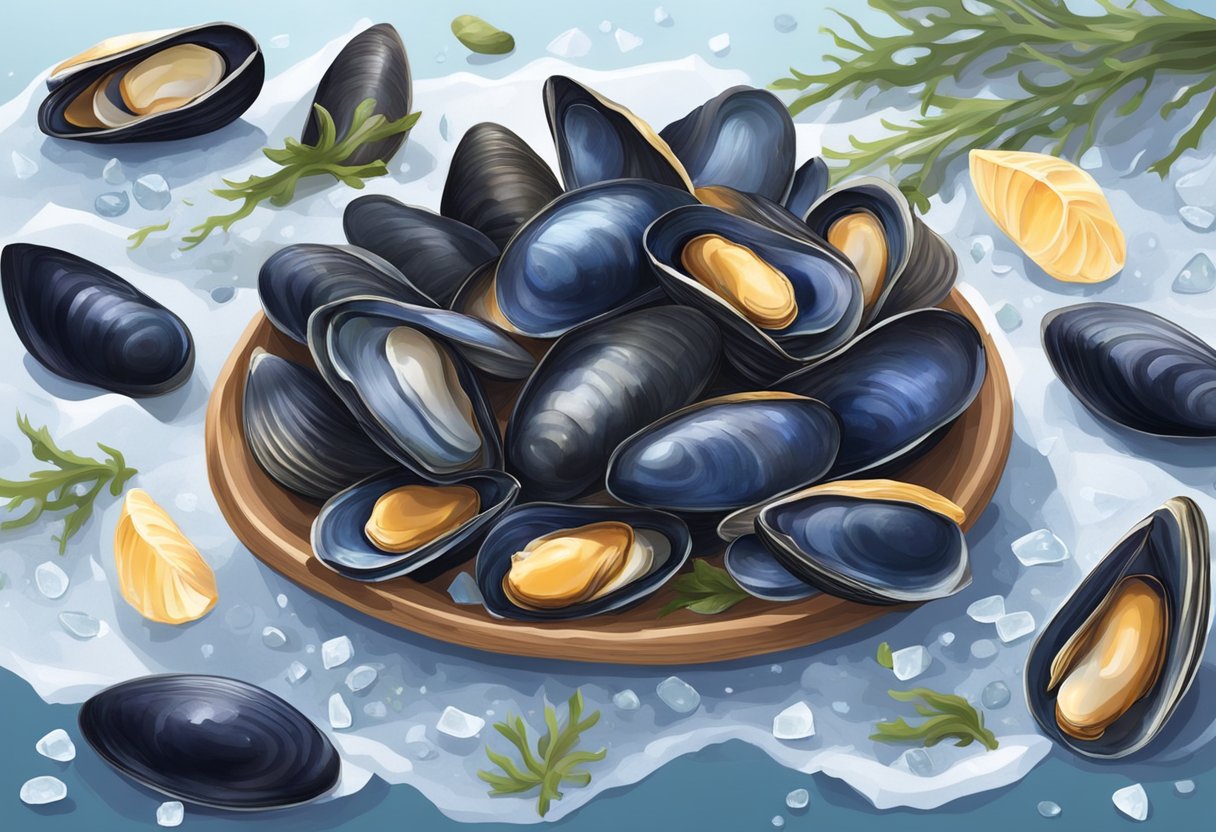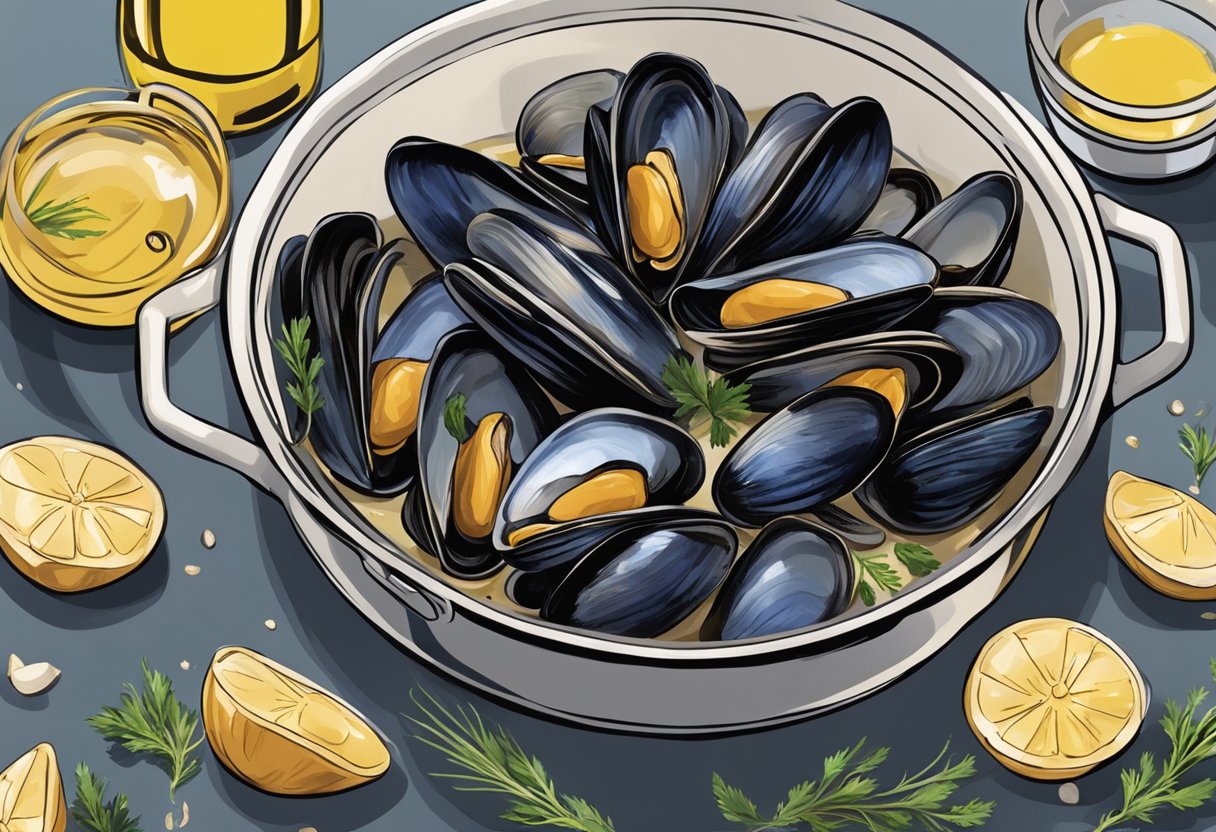Mussels are a type of bivalve mollusk that are commonly found in both saltwater and freshwater habitats. They are a popular seafood variety and are enjoyed by many people around the world. Mussels are known for their exceptional nutritional value, which makes them a healthy addition to your diet.
If you are trying to lose weight, mussels are a great option as they provide a lot of nutrition without a lot of calories. They are rich in marine Omega-3s, EPA and DHA, which are essential fatty acids that provide numerous health benefits. Mussels are also a good source of vitamin B12, iron, phosphorus, manganese, vitamin C, folate, potassium, and zinc.
Preparing and cooking mussels is easy, and there are many delicious recipes that you can try. Whether you steam them, sauté them, or toss them with pasta, mussels are versatile and can be enjoyed in a variety of ways. In the following sections, we will take a closer look at mussel basics, preparing and cooking mussels, and answer some frequently asked questions.
Key Takeaways
- Mussels are a type of bivalve mollusk that are rich in nutrition and make a healthy addition to your diet.
- Mussels are easy to prepare and cook, and there are many delicious recipes that you can try.
- Mussels are a versatile seafood that can be enjoyed in a variety of ways.
Mussel Basics

Mussels are a type of shellfish that are found in both saltwater and freshwater habitats. They have a distinct elongated and asymmetrical shell, which is made up of two parts. The intertidal zone, where the ocean meets the land between high and low tides, is their natural habitat.
Anatomy and Species
The most common species of mussel is the Mytilus edulis, which is widely cultivated for food. Mussels have a soft body that is protected by a hard shell, which is made up of two hinged parts. They have a muscular foot that they use to attach themselves to rocks, and they feed by filtering water through their gills.
Nutritional Profile
Mussels are a nutritious source of protein, vitamins, and minerals. They are low in calories and fat, and high in iron, vitamin C, calcium, and potassium. They are also a good source of vitamin A and vitamin B12.
Selecting and Storing
When buying mussels, look for ones that are tightly closed, or that close when tapped. Avoid any that are open or have cracked shells. Farm-raised mussels are a good choice, as they are usually cleaner and less gritty than wild mussels.
To store mussels, place them in a bowl or colander, cover with a damp cloth, and store in the fridge. They should be consumed within a day or two of purchase, and any that do not open during cooking should be discarded.
Preparing and Cooking Mussels

Mussels are a delicious and healthy seafood option that is easy to prepare and cook. Here are some tips and techniques for cleaning and preparing mussels, cooking them, and some recipe ideas and pairings to try.
Cleaning and Preparation
Cleaning mussels is an essential step in preparing them for cooking. Start by rinsing them under cold running water, removing any debris, sand, or other impurities that may be present on the shells. Inspect each mussel individually during this process, discarding any that are cracked, open, or do not close when tapped. Use a stiff brush to scrub the shells and remove any stubborn dirt or barnacles.
Next, remove the beards, which are the fibrous threads that protrude from the shells. Hold the mussel firmly in one hand and use a clean kitchen towel to grip the beard, pulling it away from the shell with a firm, downward tug. Repeat for each mussel.
Once the mussels are cleaned, you can store them in the fridge until ready to cook. Place them in a bowl and cover with a damp cloth or paper towel, ensuring they can breathe. Do not store them in an airtight container or in water.
Cooking Techniques
There are several ways to cook mussels, including steaming, grilling, and pan-roasting. Steaming is the most common method and is easy to do. Simply place the mussels in a pot with a tight-fitting lid and add a small amount of liquid, such as white wine, garlic butter, or a tomato-based broth. Steam for 5-7 minutes until the shells open, then discard any mussels that remain closed.
To pan-roast mussels, heat a cast iron or heavy-bottomed pan over high heat, add some olive oil or butter, and then add the mussels. Cook for a few minutes until they start to open, then add some white wine, garlic, and lemon juice. Cover the pan with a lid and cook for a few more minutes until all the mussels have opened.
Recipes and Pairings
Mussels are versatile and can be paired with a wide range of flavours. Try a classic white wine broth with garlic, shallots, and parsley, or a creamy sauce with aleppo pepper and lemon wedges. Serve with crusty bread for dipping in the broth.
For a seafood stew, add mussels to a pot with clams, shrimp, and other shellfish, along with diced tomatoes, bay leaves, and white wine. Simmer until the mussels have opened and the broth is fragrant and flavourful.
When choosing mussels, look for ones that are tightly closed and smell fresh and salty. Avoid any that are open or have broken shells. With these tips and techniques, you can cook delicious and healthy mussels at home.
Frequently Asked Questions

What's the best way to cook mussels?
Mussels are best cooked fresh and alive. The most common way to cook them is by steaming them in a broth or wine sauce. You can also grill or bake them. When cooking mussels, be sure to discard any that do not open after cooking.
How can you tell if mussels are safe to eat?
Fresh mussels should have tightly closed shells. If the shell is open, tap it lightly. If it does not close, discard it. Mussels that have a strong, unpleasant odor should also be avoided.
What's the difference between oysters and mussels?
Oysters and mussels are both bivalve mollusks, but they have distinct differences. Oysters have a smoother, flatter shell and are typically eaten raw, while mussels have a more elongated, oblong shell and are usually cooked.
Can you suggest a good mussels recipe with pasta?
One great recipe is linguine with mussels. Cook the linguine according to package instructions. In a separate pan, sauté garlic and red pepper flakes in olive oil. Add white wine and mussels, cover and cook until the mussels open. Toss the linguine with the sauce and mussels, and serve with fresh parsley and lemon wedges.
Is there a limit to how many mussels you should eat in one sitting?
While mussels are a healthy and low-fat source of protein, it's important not to overdo it. The recommended serving size is about 1 pound per person.
What's the average price for sea mussels?
The price of mussels can vary depending on where you live and where you buy them. On average, you can expect to pay around £3-£5 per pound of mussels.

